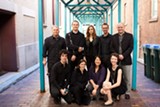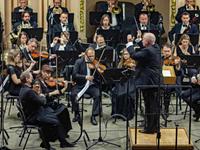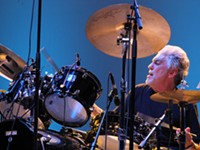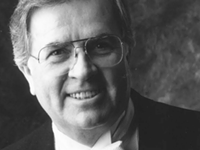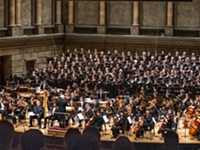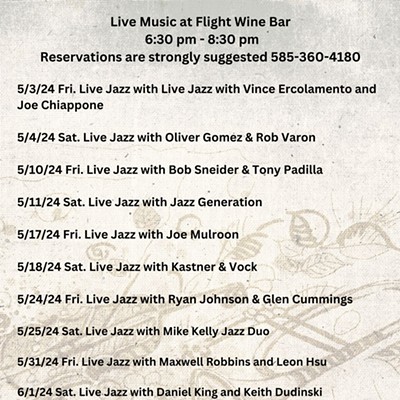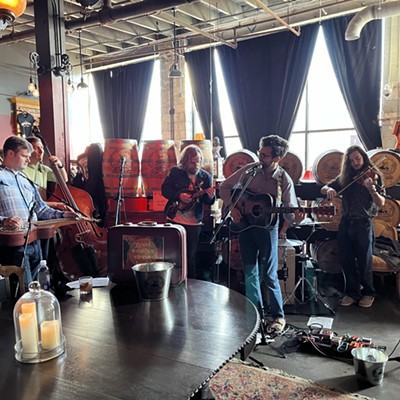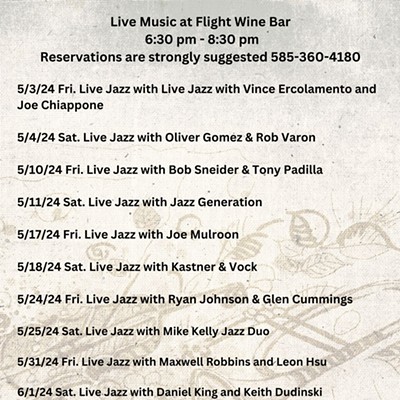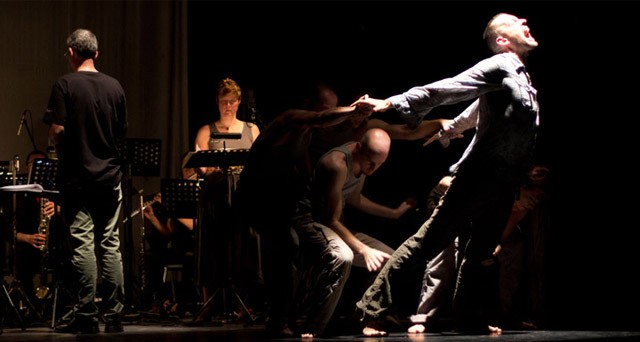
PUSH Physical Theatre will also perform as part of “Comala,” which incorporates music, dialogue, and theatrical dance.
[
{
"name": "500x250 Ad",
"insertPoint": "5",
"component": "15667920",
"parentWrapperClass": "",
"requiredCountToDisplay": "1"
}
]
For many teenagers in Mexico, the book "Pedro Páramo" by Juan Rulfo is required reading. But for Ricardo Zohn-Muldoon, the story became more than homework; it became an obsession. Over the years, he read and re-read it, until it became a part of his consciousness. Zohn-Muldoon has poured decades into his dream of creating an original musical work inspired by "Pedro Páramo," and his efforts garnered a Pulitzer nomination along the way. As he says, "I'm hoping by now it's pretty much done. It's too many years..."
On January 24, Zohn-Muldoon's work, titled "Comala," finally comes to Rochester, in a production including Eastman BroadBand, Alia Musica, and PUSH Physical Theatre. The performance will mark the end of a short tour at various venues in the United States and Mexico, including at the Cervantino Festival in Guanajuato, Mexico. Zohn-Muldoon is an associate professor and chair of the composition department at the Eastman School of Music.
Like the central character in "Pedro Páramo," which is set in the small Mexican town of Comala, Zohn-Muldoon has been on something of a journey to bring his dream to fruition. His work on "Comala" began in the mid-1990's, when he met with a theater director who tried to dissuade him, saying "Pedro Páramo" wasn't opera material because it wasn't a straightforward drama. As Zohn-Muldoon admits, "This was a very particular book; everyone is pretty much dead."
Zohn-Muldoon explains that the book starts with a first-person narrator, who, mid-way through the book, reveals that he is dead. "It's completely unexpected," says Zohn-Muldoon. "You entered this book through his perspective, but then you realize it wouldn't have mattered whether you entered through him or any other character's perspective because they were already dead, too."
With these challenges in mind, Zohn-Muldoon began composing with an approach that uses singing to give voice to the dead characters contrasted against the spoken word used for the living characters, and he allows for physical movement to extend the expression into a multi-dimensional visual experience. Zohn-Muldoon used the text precisely as written by Rulfo, finding it so beautiful that it was "impossible" to translate. Although the piece is billed as a "scenic cantata," the conversation with Zohn-Muldoon gives more the impression of "opera" for its foreign language, staging, and emotional components.
What Americans consider a sharp line between life and death does not inhibit Zohn-Muldoon's creative abilities. "In Mexico, the whole notion of death is seen with more humor," says Zohn-Muldoon. "The Day of the Dead is a very celebratory time. In some areas of Mexico, people go and have a meal at the graveyard near the tomb of a relative. They even make the favorite dish of the person to reconnect with one's collective memory."
The additional advantage Zohn-Muldoon may have in pivoting the novel into a modern musical expression is his personal connection to the storyline. "In the book, there is this whole sense of leaving home as the character tries to find out who he is, to find his roots, and dying in the process," says Zohn-Muldoon. "My father's side of my family is Jewish. They left for Mexico in 1938, to escape, and eventually my paternal grandmother went mad and ended up institutionalized. It was always very strong on me as a kid to see her like that. When I read the book, I felt very disturbed about someone who is unable to communicate with you."
And yet what Zohn-Muldoon found in his own journey with Rulfo's work was a place where the dead exist in peoples' memories. "The central question [in 'Comala'] is one of memory," says Zohn-Muldoon. "People die. The memory of them remains for many, many years after they're gone."
Having a clear emotional vision of what he wanted to communicate to an audience was a good beginning, but Zohn-Muldoon also had to deal with the realities of being a composer of a multi-disciplinary new musical work.
"I started writing 'Comala' when people would ask me for a short piece," says Zohn-Muldoon. "I would take a short passage from the book and I would try to convince the person commissioning the work that this was what the work should be about."
Intending to grow these short works into a larger performance work, Zohn-Muldoon ambitiously agreed in 2001 to mount "Comala" at a festival in Mexico City, even though, as Zohn-Muldoon admits, "I only had five scenes finished."
And it wasn't just that Zohn-Muldoon was on a hard deadline to complete the work. A key musician ended up not making the performance. The festival was shortly after the September 11 terrorist attacks, and, although the percussionist had a green card, he was of Cuban origin and the Mexican government would not permit him entry. "We had to go ahead with the performance, so the ensemble distributed the percussion amongst themselves...it was just insane," says Zohn-Muldoon.
After the festival, Zohn-Muldoon started spending the "endless hours of slaving over a desk" to bring his vision forward. He also started working with several different dance choreographers. It wasn't until he contacted Rochester-based PUSH Physical Theatre that Zohn-Muldoon found what he had envisioned taking place on the stage to enhance the music.
Darren Stevenson, co-artistic director for PUSH, says he agreed to the project even before hearing the music. "Ricardo's desire to collaborate is what originally drew me into the project," says Stevenson. "I'm used to the composer being God, but Ricardo even changed a few bars of the music because of the movement — that just never happens."
Stevenson says that PUSH is a unique group, and uses the word "movement" more than "dance" when he is speaking. "Our movement tends to be narrative. We're used to performing with no lyrics, no words, just our bodies," says Stevenson. "We want the audience to be able to know who is who and how the characters relate to each other from start to finish."
For "Comala," PUSH's choreography extends to interact with the singers and musicians. Stevenson says that he had not previously worked with new-music musicians to know that they do "musical athletics," which added to the challenge of depicting living and dead characters.
"We had been rehearsing to recorded music," says Stevenson. "When I saw the musicians actually playing their instruments, I was blown away by the physicality of what they were doing. They were doing things that seemed impossible on paper." Stevenson says, "We really wanted to create choreography that didn't overwhelm the musicians, so we brought them into the choreography at certain points, and then at others we decided we didn't even need the dancers on stage."
With approximately 30 instruments and several singers required by the score, Zohn-Muldoon was already exploring, in his own words, "sounds from instruments that don't seem physically connected to the instruments, looking for what lies hidden."
Here, too, Zohn-Muldoon veers from what we see of a person through our eyes and delves into the human condition. "What I am trying to do with the music is to share how the book moved me," says Zohn-Muldoon. "That's the power of art. It captures not just the record of someone, but the feelings of someone. It's hard to open up, really. There's an element of exhaustion that allows you to let it all out. When you want to make something that has artistic value, you have to open up. It's about moving people — somehow."
The January 24 production will feature Tony Arnold, soprano, and Rob Frankenberry, tenor. Federico Garcia will conduct. The evening will begin with instrumental ensembles presenting world premieres of two works by Alia Musica composers: "Recitative Framment" by John Arrigo-Nelson and "Un Re in Ascolto" by Federico Garcia. Also included are "5 Haiku" by Michael Fiday and "Guitango" by Zohn-Muldoon.
Speaking of...
Latest in Classical
More by Paloma Capanna
-

The multisport multiverse
Apr 30, 2014 -
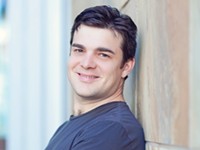
CLASSICAL | Rochester Philharmonic Orchestra
Apr 9, 2014 -
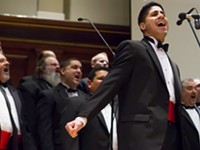
POP/CLASSICAL | Rochester Gay Men's Chorus
Mar 26, 2014 - More »
